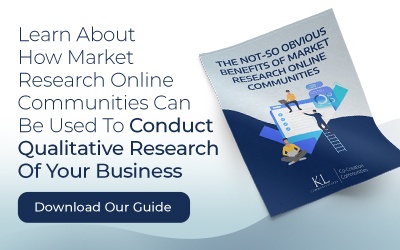
Let’s face it, market research online communities (MROCs) wouldn’t exist without customers. Customers are truly the backbone of this operation. They provide their honest feedback when asked and continue to participate time and time again. The trick, though, is learning how to both receive and implement customer feedback in online communities in a way that drives commercial success.
What’s the question?
Well, there’s several questions that need to be asked. The first is how can you get customers to join online communities and participate in the discussion so that you can collect feedback? Then, once you do so, how do you get them to engage on a constant basis?
In order to use customer feedback from MROCs in a manner that adds value, specifically by collecting meaningful and actionable insights, the questions you ask can make all the difference. That is, study design, and getting it right is the imperative. Layered on top of study design is which methodology to use to ask the right questions, as that can impact participation levels and quality of responses.
So, from here, the critical question becomes, which questions do we ask our customers? Avoid binary yes/no answers or rating how much a customer likes/dislikes your product as these are generally not advised. In contrast, asking questions to analyze the depth of the emotional connection to the brand are spot-on. Other good question angles include interrogating customers about how they use the product versus asking generic, wide-open questions such as, “Which feature would you like to see?” Every question should be targeted to answering why and how customers would use your product.
What market research attempts to do is to better understand your customer, what they struggle with, what they really want and how your product would make their lives better. Many companies use customer feedback in MROCs to generate insights into how their competition is better or how the competing product is used differently than your offering. In this instance, questions typically probe why A is better than B, what it would take to make B better than A and so on.
Benefits of online communities for market research
With regards to the benefits of MROCs, there are almost too many to list. Once the infrastructure is established, including recruiting, there are significant cost-savings to be gained through a digital approach. Additionally, the flexibility of the approach offers researchers the ability to rapidly change lines of questioning, insert clarifying questions and control the pace and direction of the discussion so that it can be kept on track and productive.
Other advantages of using customer feedback sourced from MROCs include the opportunity to readily convert new ideas into new product features, new service options or even whole new business ventures. Not to be overlooked is the benefit derived from making the customers feel valued by asking for their feedback. This translates to brand championing, purchasing loyalty and word-of-mouth referrals. Working collaboratively in tandem with your customers to solicit feedback through a dynamic, digital approach in a co-creation community further augments the value derived because it affords customers with a chance to be a direct part of the action and to interact directly with the brand.
How you solicit and use customer feedback the right way
That’s the exam question- what’s the right way to do this? To begin, you need to think about the key objectives that you want to get out of each research study. In some ways, this requires guessing what the answers will likely be, with options, then designing the questions to generate responses that either prove or disprove the hypothesis. Designing questions that are too narrow, offer limited opportunity for a descriptive response or may be regarded as offensive and too personal, impeding market research success.
Some companies may be keen on taking a strategic and broader approach which enables customers to co-create something new from the ground up. Here, co-creation communities are the right approach. It’s a matter of defining the endgame up front, then working backwards on a study design and plan on how to get there. Doing so with regularity affords brands with a competitive edge and helps keep them relevant.
Matching your method to your demographic also becomes important. For example, if you are targeting the elderly, MROCs may limit participation. Likewise, although being inclusive is generally favored, opening an online community to a lot of men to discuss a women’s product or issue may not be the best approach.
Once you designed the right questions, properly incentivized your audience to secure participation, opened it up to solicit feedback and collected some answers, it’s now time to analyze the quality of the responses. Do you notice any recurring themes? If a large collection of responses is homogenous, this signals that it’s time to close that question out and ask a new question which will allow for greater granularity and variability in the response.
Taking a tactical approach, which is limited to one feature or aspect of use of a product can be beneficial. Ask what’s working versus what’s not: get in, get out and get it done. But, be sure to provide closed-loop communication so that the customers know their feedback was valuable and instrumental in driving a change. This step is as critical as crafting the right questions and affirms to customers that their opinions are important. Moreover, that they are important. Once this message is received, customers feel motivated to respond again in the future as well as remain likely to continue supporting your brand.
In summary, how to use customer feedback in MROCs can be distilled down to a few critical steps:
- Design questions that will encourage descriptive, detailed and thoughtful responses;
- Closely monitor the online community to ensure it doesn’t stall-out;
- Provide closed-loop communication to reinforce how much the participants are valued.
That’s all there is to it. Using customer feedback in online communities requires following these three steps and then you’re well positioned to go back and ask again!
